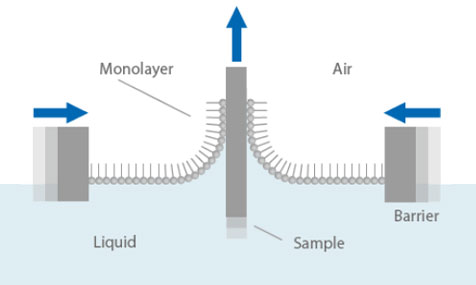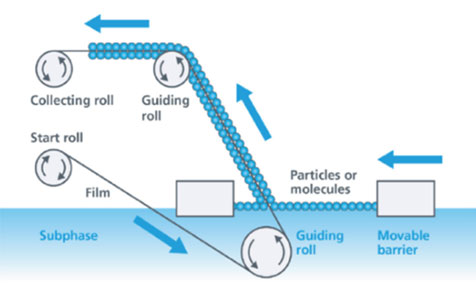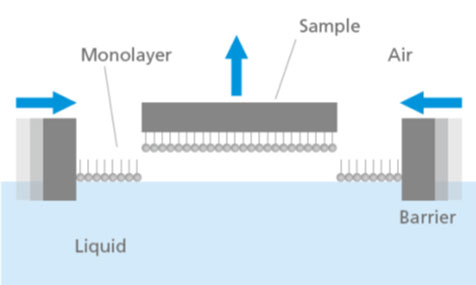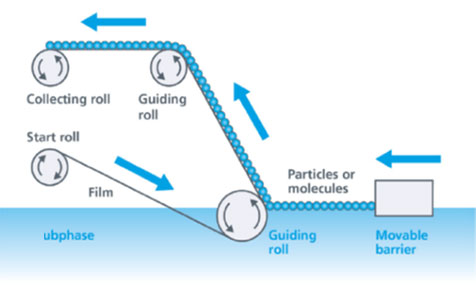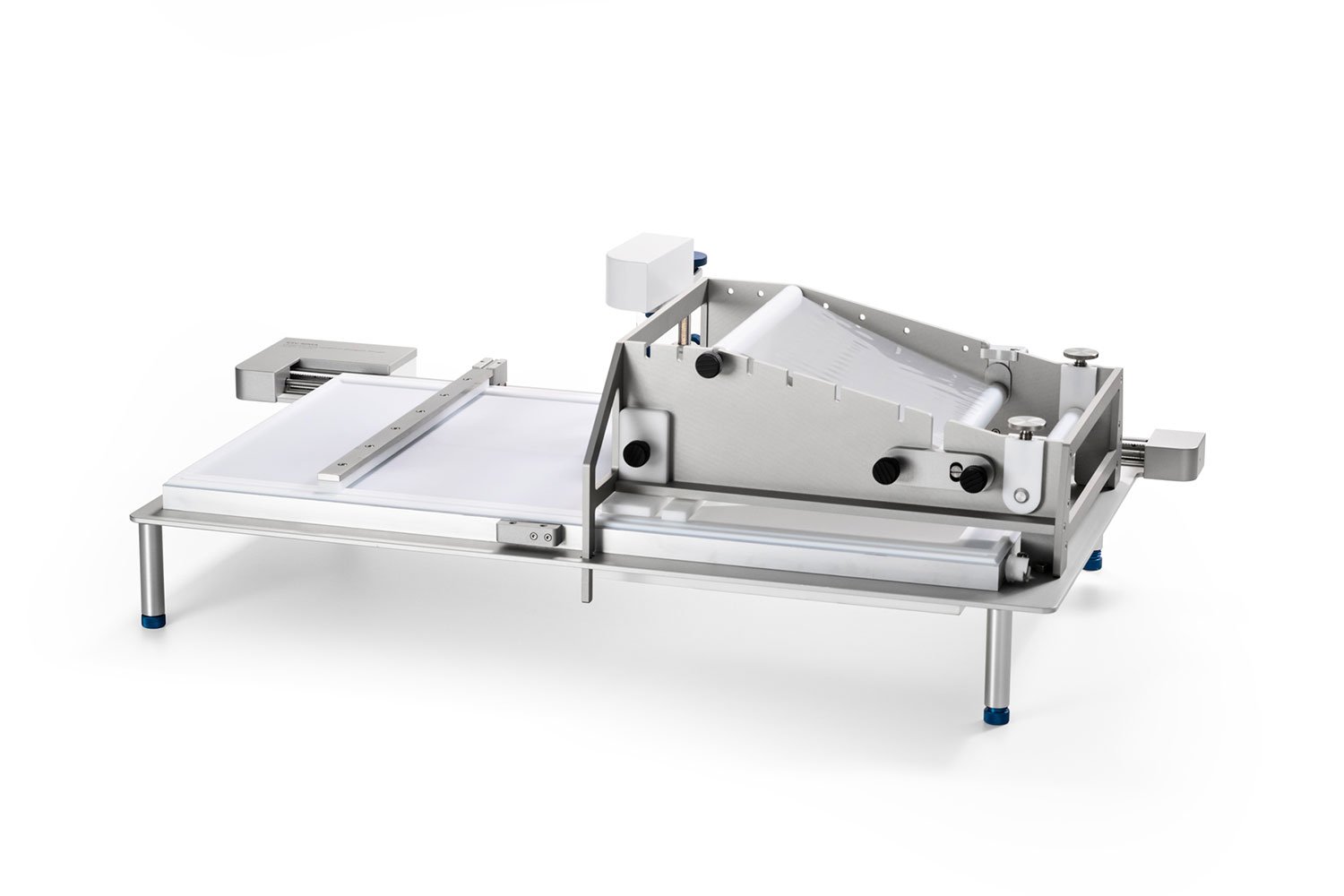
Langmuir-Blodgett Troughs
Roll-to-Roll LB Trough
Quickly and precisely coat large areas of flexible substrates with the KSV NIMA Roll-to-Roll LB trough system, designed for high throughput. In the Roll-to-Roll LB process, a flexible substrate is fed continuously fed into the trough where it passes through the monolayer of nanoparticles or other material.
Talk to an Instrumentation Specialist Today!
Scalable Monolayer Deposition
Instead of using individual substrates for deposition, the KSV NIMA Roll-to-Roll system utilizes a roller that holds a flexible sheet of substrate. Plastics such as poly(ethylene terephthalate) and poly(vinyl chloride) are common substrates. The sheet feeds through the air-liquid interface, and LB deposition occurs as the roll is pulled through the interface. The continuous feed-through allows for continuous deposition of an area much greater than an individual substrate, thereby greatly increasing throughput. The positioning of the barriers and rollers dictate whether the molecules are deposited in a two-sided LB configuration (Figure 1a & 1b) or a one-sided Langmuir-Schaefer (Figure 1c & 1d) configuration.
Figure 1 – Conventional LB deposition (a) and roll-to-roll LB deposition (b). Langmuir-Schaefer deposition (c) and the equivalent roll-to-roll configuration (d).
Some fields where deposition of a large area of single-layer molecules on a substrate can be beneficial include colloids, solar cells, and organic light-emitting diodes (OLEDs). The ability to control surface pressure of the molecules at the interface prior to deposition allows for the formation of high-quality films with few defects. Combined with the larger continuous substrate available for deposition, the roll-to-roll LB trough addresses a key limitation of LB technology by adding significant scale-up capabilities. For researchers looking to move their research into prototyping and feasibility phases, the roll-to-roll system is an indispensable addition to their lab.

